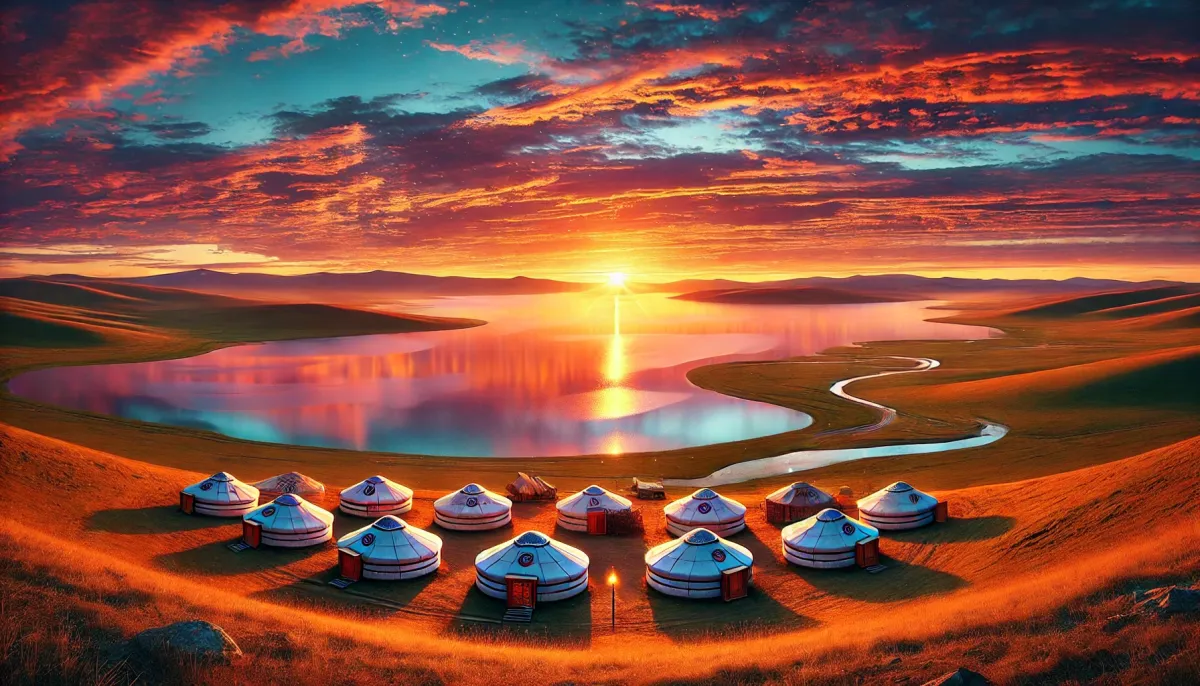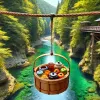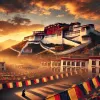Hey everyone, Mark here! I'm a seasoned backpacker with a serious case of wanderlust, and my latest adventure took me on an unforgettable journey through Inner Mongolia and beyond, touching on the Siberian Railway. For those unfamiliar with the region's geography – and trust me, many are – Mongolia is actually divided: Outer Mongolia (officially the Republic of Mongolia) and Inner Mongolia, an autonomous region within China. This trip explored both, giving me a unique perspective on the history and culture of this vast and fascinating area.
Exploring the Immensity of Hulunbuir
Our first stop was Hulunbuir, a prefecture-level city in Inner Mongolia. Let me tell you, this place is HUGE! Seriously, it's 7.3 times the size of Taiwan. Can you imagine? Hulunbuir encompasses breathtaking landscapes, including the vast grasslands, the enchanting Genhe Wetland, and the awe-inspiring Moerdaoga National Park. We based ourselves in Hailar, a city north of the China-Russia border, which served as an excellent jumping-off point for our explorations.
The Siberian Railway: A Legend in Itself
The Siberian Railway is a bucket-list item for many travelers, and for good reason. It's the longest railway in the world, spanning a staggering 9,288 kilometers (5,772 miles) and connecting Moscow to Vladivostok, traversing Russia, Mongolia, and China. While I didn't tackle the entire route – 9,288 kilometers is a bit ambitious, even for me! – I did experience a section, combining train travel with bus tours for the perfect blend of efficiency and exploration. The journey across multiple time zones (a whopping eight!) was nothing short of epic.
Hulun Lake: A Jewel of Inner Mongolia
One of the highlights of my trip was visiting Hulun Lake, the largest freshwater lake in Inner Mongolia and the fifth largest in China. Its sheer size (2,339 square kilometers!) is mind-boggling. The lake's beauty is unparalleled, and the surrounding landscape offers stunning views. It's truly a testament to the natural beauty of this region. Hulun Lake and its sister lake, Bel Lake, are the namesakes of the Hulunbuir grasslands – "Hulun" meaning otter and "Beier" meaning male otter in Mongolian, reflecting the abundance of otters once found in the area.
A Glimpse into History and Culture: Hailar and Manzhouli
We spent time in Hailar, visiting the Hulunbuir Nationalities Museum. The museum offers a fascinating insight into the region’s rich history, culture, and the lives of the various ethnic groups that call this land home. From ancient artifacts to traditional clothing and customs, it's a must-visit for anyone wanting to delve deeper into Inner Mongolian culture.
Later, we headed to Manzhouli, a city on the border with Russia and Mongolia, known as the "throat" of the Eurasian continental land bridge. This strategically important location is visible in its historical significance, marked by the grand national gate and the 41st boundary marker. Manzhouli was also pivotal during the Chinese Communist Revolution, serving as a critical point on the "red secret traffic line."
Economic Growth and Environmental Consciousness
Inner Mongolia has undergone remarkable economic growth in recent decades, expanding significantly from its initial economic scale. While prioritizing development is important, there is a growing emphasis on ecological conservation, highlighting a positive shift towards sustainability. The region is actively promoting green initiatives and sustainable practices, particularly around Hulun Lake and the surrounding grasslands, reflecting a commitment to preserving its natural beauty for future generations. This reflects a broader global trend, where even rapidly developing nations are increasingly placing importance on environmental protection and ecotourism.
Practical Tips for Your Inner Mongolia Adventure
| Aspect | Tip |
|---|---|
| Transportation | Combine train travel (Siberian Railway segments) with bus tours. |
| Accommodation | Options range from basic guesthouses to more comfortable hotels. |
| Food | Be adventurous and sample local Mongolian cuisine. |
| Activities | Explore the grasslands, visit lakes, discover museums, and experience border towns. |
| Best Time to Visit | Summer (June-August) for pleasant weather and vibrant landscapes. |
[block5]
Conclusion: An Unforgettable Journey
My journey through Inner Mongolia was more than just a trip; it was a profound experience. The vast landscapes, rich history, and unique cultures left an indelible mark on me. I highly recommend this destination to anyone looking for an off-the-beaten-path adventure that blends natural beauty with historical significance. If you're looking for an adventure that combines breathtaking scenery, rich history, and a unique cultural experience, look no further than Inner Mongolia. You won't be disappointed!







